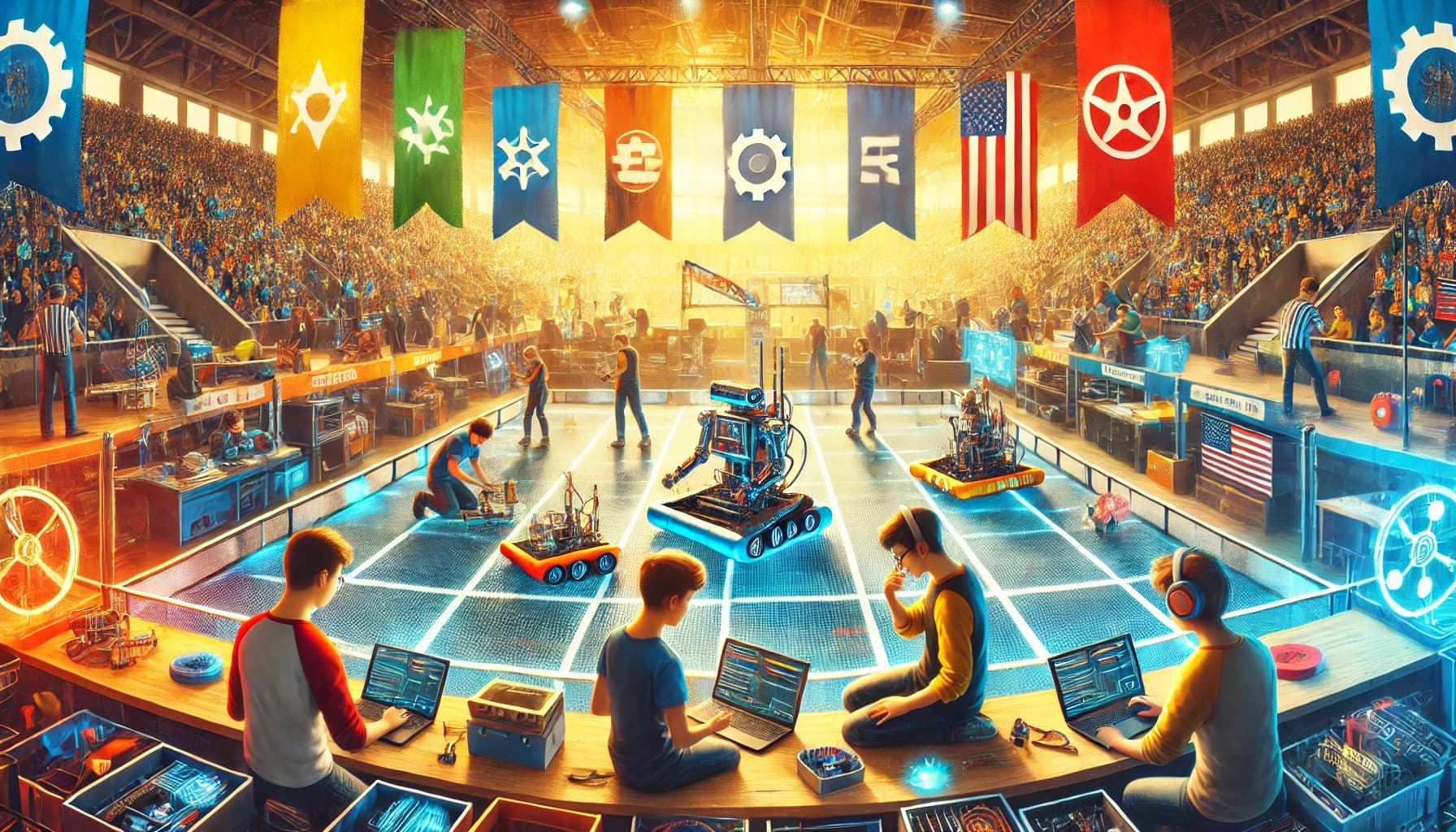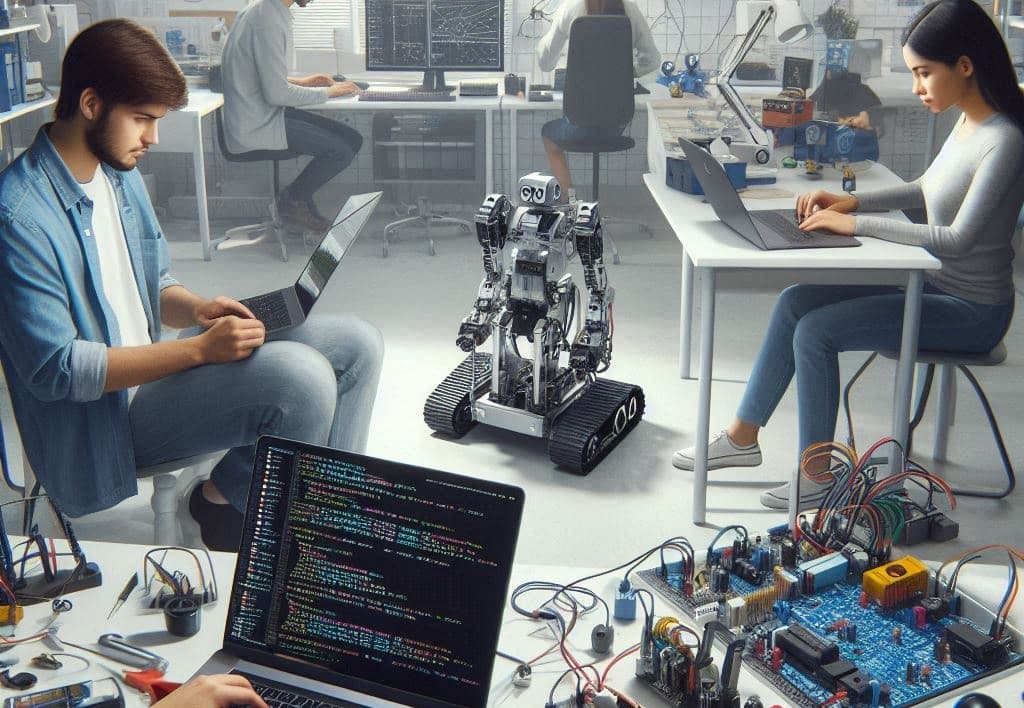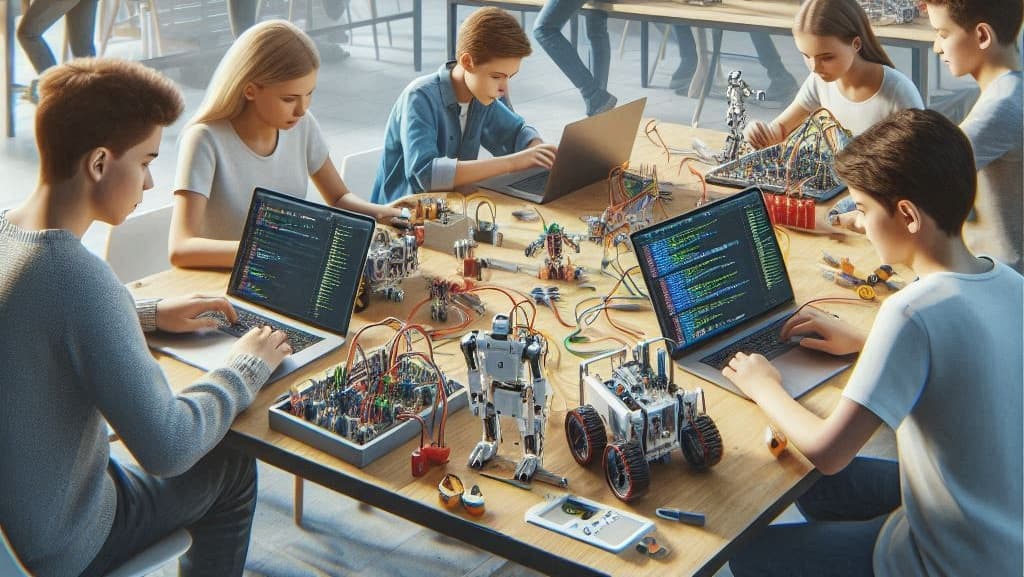Blog Details
- Home
- Blog page

Top 5 Robotics Competitions for Students: What You Need to Know
In the ever-evolving field of robotics, competitions serve as incredible platforms for students to apply what they've learned in a real-world setting, meet like-minded peers, and gain hands-on experience. Robotics competitions not only nurture technical skills but also foster problem-solving, teamwork, and perseverance. If you’re a student passionate about robotics, joining a robotics competition could be a rewarding and transformative experience!
This guide will introduce you to five exciting robotics competitions that every budding roboticist should know about. We’ll break down each competition’s core features, eligibility criteria, and the unique learning experiences they offer. By the end of this post, you’ll have a clear understanding of which competition aligns with your goals and how to get started!
1. FIRST Robotics Competition (FRC)
The FIRST Robotics Competition (FRC) is one of the most renowned robotics competitions for high school students. Sponsored by the organization FIRST (For Inspiration and Recognition of Science and Technology), FRC brings together students from around the world to build and program large robots that perform specific tasks.
➡️Eligibility: Open to high school students (grades 9-12).
➡️Team Structure: Teams consist of students, mentors, and sometimes even professional engineers who offer guidance.
➡️Competition Format: Each season has a new game theme, requiring teams to build a robot that can accomplish specific objectives within a limited timeframe.
➡️Why It’s Great: FRC combines the excitement of a varsity sport with real-world engineering challenges. Participants learn valuable skills in programming, mechanical engineering, electrical engineering, and even project management. FRC also emphasizes the concept of "Gracious Professionalism," promoting respect and kindness in competitive settings.
Key Takeaway: FRC is ideal for students looking to gain hands-on experience and learn from mentors. It’s highly competitive and a fantastic way to connect with professionals in the field.
2. VEX Robotics Competition
The VEX Robotics Competition (VRC) is popular among middle and high school students worldwide. Known for its accessible and flexible robot design kits, VEX allows students to design, build, and program a robot to compete in a unique game each year.
➡️Eligibility: Open to middle school (grades 6-8) and high school students (grades 9-12).
➡️Team Structure: Teams are typically composed of 4-10 students.
➡️Competition Format: Similar to FRC, VEX releases a new game each season that teams prepare for. Robots must complete tasks that involve maneuvering objects, stacking, and scoring points.
➡️Why It’s Great: VEX focuses heavily on creativity and innovation. Its accessible design kits allow students to modify and refine their robot designs, promoting iterative learning. VEX also hosts the annual VEX Robotics World Championship, where top teams from around the world compete.
Key Takeaway: If you’re excited by a fast-paced, hands-on robotics experience with opportunities to iterate and improve, VEX is a great fit.
3. Botball Educational Robotics Program
Botball is an educational robotics program that combines the creativity of robotics with STEM education. Botball differs from other competitions by emphasizing programming over remote control; robots are autonomous, meaning they must be pre-programmed to accomplish specific tasks without human intervention during the match.
➡️Eligibility: Open to middle school and high school students.
➡️Team Structure: Teams are often made up of students from a single school, and competitions take place both regionally and internationally.
➡️Competition Format: Teams receive identical robot kits and have 7-8 weeks to design, build, and program their robots. During the competition, robots navigate through a set environment to achieve various goals.
➡️Why It’s Great: Botball encourages logical thinking, as students must carefully program robots to operate autonomously. It’s a perfect choice for students interested in both coding and robotics.
Key Takeaway: Botball is ideal for students with a keen interest in programming, as it offers a unique chance to learn about autonomous robotics.
4. World Robot Olympiad (WRO)
The World Robot Olympiad (WRO) is an international competition that brings together students from elementary through university level. With categories for different age groups, WRO offers a range of challenges that test participants’ ability to design, build, and program robots.
➡️Eligibility: Open to students aged 6-25, with different categories for elementary, junior, senior, and university-level participants.
➡️Team Structure: Teams typically consist of up to 3 students and one coach.
➡️Competition Format: Each year, WRO presents a theme (often aligned with current global challenges) and associated challenges, where participants build robots to address real-world problems.
➡️Why It’s Great: WRO’s age-diverse categories make it accessible to students at various educational levels, and its global reach makes it an excellent platform for cultural exchange. The themes encourage creative problem-solving and emphasize the social impact of robotics.
Key Takeaway: WRO is perfect for students of all ages who want to use robotics to make a difference, with a focus on innovative solutions to global issues.
5. RoboCup Junior
The RoboCup Junior competition is an entry-level tournament that allows students to participate in the prestigious RoboCup initiative, whose goal is to develop autonomous robots that will one day play soccer against human teams! RoboCup Junior offers a platform for young students to develop their technical skills in robotics and AI through various challenges.
➡️Eligibility: Open to students aged 19 and below.
➡️Team Structure: Teams vary in size but are generally made up of students from a single school or organization.
➡️Competition Format: RoboCup Junior has three primary challenges: Soccer, Rescue, and OnStage (a performance-based challenge). Each of these focuses on different technical skills, from building soccer-playing robots to creating robots that can navigate obstacles autonomously.
➡️Why It’s Great: RoboCup Junior emphasizes AI and teamwork, and its challenges help students learn how to develop intelligent, autonomous systems. Plus, it’s an opportunity to participate in the larger RoboCup community!
Key Takeaway: RoboCup Junior is a great entry point into advanced robotics and AI, especially for students interested in real-world applications of autonomous systems.
Conclusion
Robotics competitions offer invaluable experiences beyond the classroom, providing a place for students to grow, learn, and build friendships. From designing robots to programming and testing them, students have the chance to apply STEM concepts in hands-on ways that are as challenging as they are rewarding.
Whether you’re looking for teamwork, technical challenges, programming practice, or creative expression, there’s a robotics competition out there that’s perfect for you. So, gather your friends, talk to your teachers, and dive into the world of robotics competitions! With dedication and hard work, these competitions can be a stepping stone to a bright future in STEM.
Search here
Recent Post
Photo Gallery











